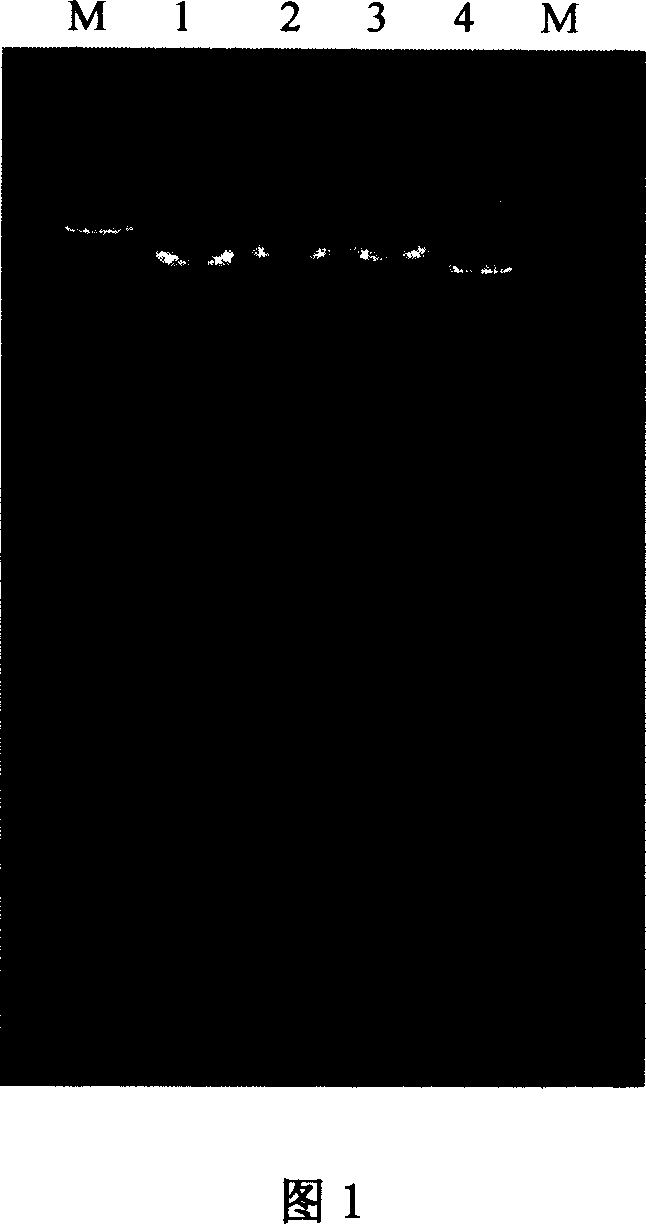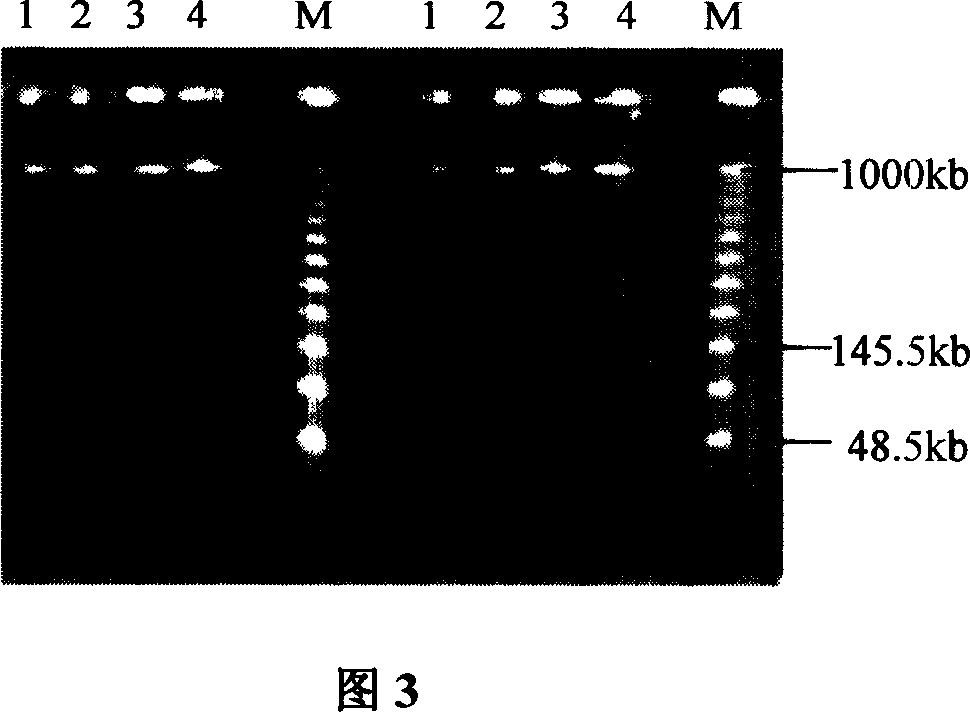Process of cloning new resistance gene of wild rice
A technology of resistance gene and wild rice, applied in the field of cloning new resistance genes of wild rice, can solve the problems of huge workload, heavy workload, and difficult to control, and achieve the effect of overcoming cumbersome processes and improving rice varieties.
- Summary
- Abstract
- Description
- Claims
- Application Information
AI Technical Summary
Problems solved by technology
Method used
Image
Examples
Embodiment 1
[0033] Example 1: Using Dongxiang wild rice candidate resistance gene enrichment library to isolate and clone new resistance genes to rice blast and bacterial blight.
[0034] 1. Construction of Dongxiang wild rice transformable genome library
[0035] 1) Mass extraction and purification of pCAMBIA1301 plasmid
[0036] The identified small-scale culture was inoculated in 1 L of Km / LB liquid medium at a ratio of 1:200, and cultured overnight at a constant temperature shaker at 37° C. and 225 rpm. The plasmid was extracted according to the third edition of the molecular cloning experiment guide by mass method extraction plasmid method, and then the plasmid extracted from 1L culture was dissolved in 3ml TE.
[0037] Transfer the crudely extracted plasmid into a 15ml conical centrifuge tube, then add 3ml of pre-cooled 5M LiCl solution, mix well, and centrifuge for 10min at 4°C, 10000rpm. Transfer the supernatant to a 30ml conical centrifuge tube, add an equal volume of isopropanol, an...
PUM
 Login to View More
Login to View More Abstract
Description
Claims
Application Information
 Login to View More
Login to View More - R&D
- Intellectual Property
- Life Sciences
- Materials
- Tech Scout
- Unparalleled Data Quality
- Higher Quality Content
- 60% Fewer Hallucinations
Browse by: Latest US Patents, China's latest patents, Technical Efficacy Thesaurus, Application Domain, Technology Topic, Popular Technical Reports.
© 2025 PatSnap. All rights reserved.Legal|Privacy policy|Modern Slavery Act Transparency Statement|Sitemap|About US| Contact US: help@patsnap.com



